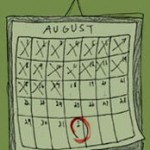Qualities of a Great Reserve Study
Everybody wants a great Reserve Study. But what does that mean? Let me suggest a list:
- All the “right” components on your Reserve Component List (none missing that should be on the list, and none on the list that should be handled in the Operating Budget)
- Accurate estimates of Useful Life (UL) and Remaining Useful Life (RUL)
- Accurate estimates of Repair/Replacement costs ($)
- An accurate projection of the starting Reserve balance ($)
- A Funding Plan that allows for the timely repair & replacement of all the items on the Component List
Component Selection: National Reserve Study Standards

If you’ve had a Reserve Study prepared by an independent, credentialed Reserve professional (a “RS” or Reserve Specialist), your Reserve Component List should only need minor adjustments annually. Even so, review that Component List in light of the following National Reserve Study Standards 4-part test. Make sure that every component on the list is:
- A common area maintenance responsibility
- With a limited Useful Life
- With a predictable Remaining Useful Life, and
- With a repair or replacement cost above a minimum threshold of
significance
This will be your best way to make sure you are Reserving for all the “right” components.
Inform Your Reserve Study Provider of Recently Completed Projects
Any recent Reserve projects which have been completed by the Association should be reflected in your Reserve Study. Some associations maintain a “Reserve Projects” folder, where receipts and proposals are filed. This information helps ensure accurate estimates for Useful Life, Remaining Useful Life, and current Repair/Replacement costs.
If a roof is replaced for $100,000 this year, the replacement costs in your current Reserve Study should reflect your actual costs. If your Reserve Specialist is not informed of this expense and updates your Reserve Study showing the roof as having one more year of Remaining Useful Life with an estimated replacement cost of $80,000, the study will not be an accurate snapshot of the community.
Both the Percent Funded and recommended Monthly Reserve Contribution calculations will be affected by inaccurate component information. Learning from the actual projects at your association is the best way to help improve the accuracy of your Useful Life, Remaining Useful Life, and Replacement Cost estimates.
Provide Your Reserve Study Provider with Vendor Information
Providing your Reserve Specialist with a list of the Associations’ vendors will allow for vital information to be passed on from vendors who have regular access to the Associations’ Reserve components. These vendors provide valuable information concerning the condition of, and cost to replace specific components.
An example would be a pool vendor who could provide information about a pool filter that, while not leaking and not rusting, is simply not functioning properly and needs to be replaced. The pool vendor could inform the Reserve Specialist that a different type of filter is needed and what the cost would be for replacement.
Another example would be an asphalt vendor who could provide information on the needs of the community, whether a seal-coat is all that is needed or a more substantial project like a petromat overlay or rebuild of the streets and driveways.
Your End of Year Reserve Fund Balance
Estimating your end-of year Reserve Balance requires the involvement of the Board and management. Management typically has the most recent bank statements, knowledge of any outstanding payments needed to be made from the Reserve Fund, and a realistic expectation of whether budgeted Reserve contributions will actually be made through the end of the year.

It is that combination of actual balance, projected expenses, and projected income to the Reserve Fund that will ensure a realistic and accurate Fiscal Year End Reserve balance. The accuracy of this computation is essential, as it will affect the % Funded calculation and possibly the recommended Monthly Reserve Contribution.
Timing is also an important factor in the Reserve Study process. Ideally, the recommended Monthly Reserve Contribution should be reflected in the budget. The study should therefore be completed before the draft budget is completed. For communities with a December 31 Fiscal Year End, bids for preparation of the Reserve Study should be obtained in early summer and the process started in July or August. The best case schedule scenario is shown below:
Jul- Aug Obtain bid for Reserve Study
Sep- Oct Reserve Study is completed
Oct-Nov Budget is approved
Nov State Disclosures are sent out (as req’d)
This schedule allows the management and board to review the study and request possible revisions. The worst case scenario is that the association needs a Reserve Study and is frantically seeking bids in early November. That situation will lead to the
Reserve Study being expensive, rushed, and possibly too late to be utilized in the budgeting process.
Reserve Study Funding Plans: National Reserve Study Standards
Finally, what makes a great Funding Plan? National Reserve Study Standards require a Funding Plan be based on four principles:
- that it provide adequate funds when needed
- that it provide budget stability from year to year
- that it fairly distribute the contributions among the owners, over the years, and
- that it be fiscally responsible.
These principles ensure that the Funding Plan is not based on the expectation that future owners will carry more than their fair share by burdening future owners with a special assessment for assets that deteriorated well before they became owners in the association.
A great Funding Plan also does not recommend Reserve contributions that are too low to be sustainable, favoring current owners.

Ideally, Reserve contributions should correlate to the current rate of deterioration of the Reserve assets – effectively offsetting their ongoing deterioration. In this way, current owners fairly pay for the deterioration of the common areas they are “using up” during the time they own a home at the association.
There should be an anticipation that the Reserve Contribution will increase annually. The desire not to increase dues is understandable, but should not be confused with the needs of the association.
Unfortunately, $300 a month is not worth what it was 15 years ago. If increases have not been made over that 15-year period, the association has been taking steps backward as the value of the dollar decreases. Further, historically low interest rates earned on Reserve funds does not help to offset inflationary increases.
The above principles require the involvement of the experienced Reserve Study professional, the Association Board, and management. A “great” Reserve Study is the result of refinements year after year, so that it accurately reflects the current physical and financial state of the association, and provides accurate budget guidance to the Board and management.
